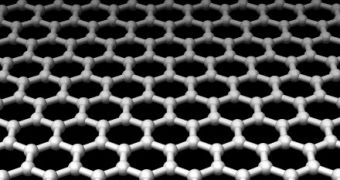Graphene has, for a while, been the main material that IT companies have been researching in their quest for better storage, but it seems it may no longer be the only one capable of being rendered into atom-thick sheets.
Today's storage solutions may look like they are progressing well in terms of storage capacity, but magnetic platters and flash chips can be optimized only so much.
Knowing that such solutions would eventually reach their limit, scientists have been researching new materials usable in data storage and memory devices.
Graphene is among the more popular solutions so far discovered, being a one-atom-thick layer of carbon about a hundred times stronger than steel.
Unfortunately, graphene is fairly expensive and hard to produce, at least with the methods so far developed.
Now, a more recent study claims that a new method, more low-cost, has been created, one that has the added benefit of higher yields of usable materials.
The other major advantage is that, besides carbon, it can produce one-atom-thick layers of other elements as well.
Considering that each element has different electrical and thermoelectric properties, new materials could be created.
"Of the many possible applications of these new nanosheets, perhaps the most important are as thermoelectric materials. These materials, when fabricated into devices, can generate electricity from waste heat,” said Professor Jonathan Coleman, Principal Investigator at CRANN and the School of Physics, Trinity College Dublin
“For example, in gas-fired power plants approximately 50% of energy produced is lost as waste heat while for coal and oil plants the figure is up to 70%. However, the development of efficient thermoelectric devices would allow some of this waste heat to be recycled cheaply and easily, something that has been beyond us, up until now."
"Our new method offers low-costs, a very high yield and a very large throughput: within a couple of hours, and with just 1 mg of material, billions and billions of one-atom-thick nanosheets can be made at the same time from a wide variety of exotic layered materials," added Dr Nicolosi, from the University of Oxford.

 14 DAY TRIAL //
14 DAY TRIAL //